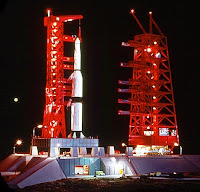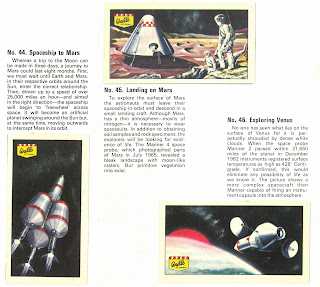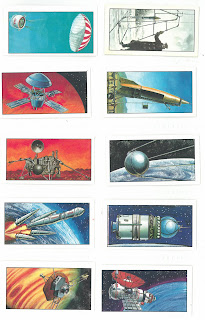Long before the advent of mobile phones, or portable video, cine films and slides were the order of the day. Super 8 and Kodakchrome film would allow anyone to make their own home movies or slideshow. Toy companies saw a gap in the market for children's slide viewers and simple projectors or the Marx Flashy Flicker gun shaped model, allowed kids to run their own tiny cinema show, just for themselves or for their friends. 3D became a big draw in the fifties, with the audience having to wear bi-chromic glasses to get a 3d effect from the film and the victorians had earlier perfected the stereoscope, which used to images of the same subject taken at slightly different angles, which when viewed though a special mount, gave a faux 3d effect.
Two businessmen developed the idea of the early stereoscope and launched the 'View-Master' device at the 1939 Worlds Fair. Whereas the original stereoscope used to images at a time, the View-Master used special 16mm slides on a disc, 21 images in seven pairs. The user could press an advance lever to quickly move on to the next scene, with the stereo slides simulating the binocular effect and increasing the illusion of depth. The first View-Masters were marketed as 'scenic postcards' and sold via photographic suppliers and tourist gift shops. As the brand developed, it acquired the rights to use Disney cartoons and other famous children's series and the View-Master reached the hands of children.
Originally made from Bakelite, the simple viewer remained essentially unchanged, apart from moving to a lighter plastic version and adding the use of sound in more recent times. As a means to present a story for children it had the advantage over a book or a comic of being much more real and almost like a film and proved really popular.
With the advent of the space race, the factual and science series of reels naturally began to include space themed disks, one of the best being a 'Project Apollo - Man on the Moon' set. As it was originally released in the mid sixties, the imagery is largely based on the projected designs for the spacecraft, which were being put forth by the various engineering companies, eager to be first to the moon,
Early concepts for the LEM were much more streamlined and rounded, whereas the Apollo capsule remained more or less unchanged in basic shape.







































